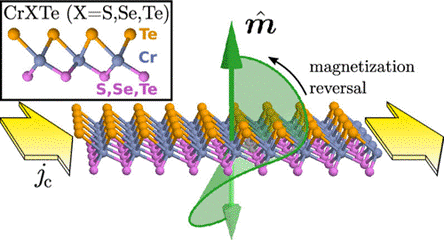ICN2 researchers have identified novel bidimensional materials with unique properties that could transform the future of magnetic memory technology.

Until now, producing magnetic memories has required two different types of materials: one for conducting the electric current and another for controlling the orientation of the magnetisation (up-wards or down-wards). Scientists in the Theoretical and Computational Nanoscience Group, including Dr José H. García (Senior Researcher), Joaquín Medina Dueñas (Doctoral Student) and ICREA Prof. Stephan Roche (Group Leader), have been exploring new materials with unique properties that could potentially fulfil both roles. Such an advancement would represent a potential next step in developing this technology. Additionally, this has been a collaborative work with researchers from Grenoble University and Aix-Marseille University. The study has been published in Nano Letters (ACS Publications).
In this publication, the authors investigated novel two-dimensional nanomaterials, specifically chromium-based transition-metal dichalcogenide (TMD) monolayers, that can act as both the conducting and the magnetic materials within the magnetic memory. This is due to their unique atomic structure (known as ‘Janus form’), which extends like a sheet with a thickness of just a few atoms and has distinct top and bottom faces. By these means, the magnetic memory may be reduced to a minimal thickness of an atomic layer, enhancing the performance of this developing technology.
This article represents a big advance in one of the main research areas of this group: the study of spin dynamics and spin-orbit torque for the development of novel ultra-efficient technologies. The research is also related to the European Research Council (ERC) grant awarded to Dr José H. García. The ERC, set up by the European Union in 2007, is the premier European funding organisation for excellent frontier research. It funds creative researchers of any nationality and age, to run projects across Europe.
Reference article:
Vojáček, L; Medina Dueñas, J; Li, J; Ibrahim, F; Manchon, A; Roche, S; Chshiev, M; García, JH. Field-Free Spin−Orbit Torque Switching in Janus Chromium Dichalcogenides. (2024). Nano Letters. https://doi.org/10.1021/acs.nanolett.4c03029.

